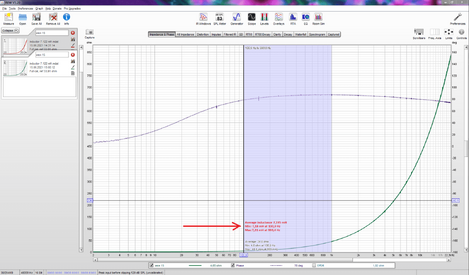Hi John,
i have made a set of measurements for some smd shielded power inductors, in the range 22uH-5.6mH.
In the description of each measure there is the inductance value and the DCR as stated by the manufacturer. In the notes, the first line between the brackets is the measure made at 1KHz with a software with a LRC function, the second line is the measure of the DCR with a milliohms meter.
As you can see, the values measured by the different methods are all very similar.
Thank you for your great work with REW.
Best Regards,
Oliver.
it seems I cannot attach the mdat file..
i have made a set of measurements for some smd shielded power inductors, in the range 22uH-5.6mH.
In the description of each measure there is the inductance value and the DCR as stated by the manufacturer. In the notes, the first line between the brackets is the measure made at 1KHz with a software with a LRC function, the second line is the measure of the DCR with a milliohms meter.
As you can see, the values measured by the different methods are all very similar.
Thank you for your great work with REW.
Best Regards,
Oliver.
it seems I cannot attach the mdat file..















